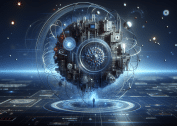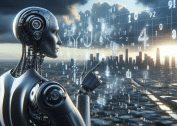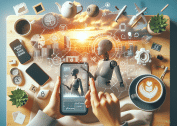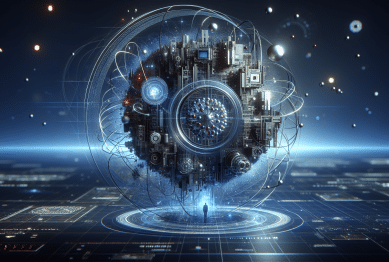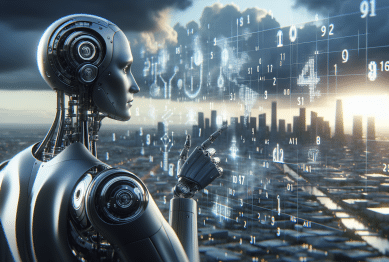Artificial intelligence is no longer a distant concept—AI tools are powering countless things you interact with each day. Explore the hidden impact of AI on daily routines, personal productivity, and global industries as this guide uncovers the practical ways technology shapes your world.
AI Tools in Everyday Devices
Artificial intelligence is woven seamlessly into smartphones, home assistants, and even kitchen gadgets, yet many people do not realize how deeply machine learning influences everyday routines. AI-powered voice assistants interpret speech to set reminders or play music, learning preferences over time. Machine vision is present in robust camera apps that enhance photos by optimizing light or removing background clutter, creating a personalized experience. As these technologies become increasingly advanced, users witness convenience rising in simple workflows like note-taking, navigation, and daily scheduling.
AI-driven smart home devices are changing how people interact with their living spaces. Thermostats equipped with machine learning algorithms recognize patterns in occupancy and outdoor weather, making real-time adjustments to optimize energy use. Similarly, security cameras now detect unusual movements using computer vision—a subset of AI that interprets images and videos, not just for security but also to enable package deliveries and family monitoring. Lights, refrigerators, and washing machines are gaining the ability to anticipate requirements or recommend settings, enhancing comfort and efficiency at home.
The integration of artificial intelligence in wearables offers new dimensions for lifestyle enhancements. Fitness trackers and smartwatches use predictive analytics to coach users, track health markers, and suggest activity levels, adjusting advice as users’ habits evolve. This type of context-aware computing makes everyday decision-making easier and often more enjoyable, providing tailored suggestions based on real-time data. Awareness is spreading that AI does not just power the futuristic; it quietly underpins much of the technology people use daily.
Personal Productivity Enhanced by AI
Boosting productivity is now easier with artificial intelligence embedded in common work tools. Machine learning algorithms filter email inboxes, recognize spam, and prioritize important communications for users. Digital calendars employ AI to automatically reschedule meetings and minimize conflicts. Automation features in document processing software proofread writing, correct grammar errors, and even suggest stylistic improvements. By automating repetitive administrative tasks, AI allows users to focus on creativity and high-value work, making complex workflows feel lighter and more manageable.
AI-powered collaboration platforms leverage predictive models to recommend files or colleagues most relevant to a project. Project management platforms with smart assistants offer reminders, forecast project risks, and help teams maintain momentum. Some software solutions use natural language processing to transcribe meetings or summarize documents, reducing the time spent searching for details. The result is a connected and adaptive workspace—one where artificial intelligence actively adjusts workflows to changing project requirements, saving time and fostering innovation.
The rise of AI-driven virtual assistants brings organization to a new level. Agents such as email bots can draft responses, filter urgent tasks, and set follow-up flags, freeing up cognitive resources. Digital note-taking apps often include contextual search powered by machine learning, making it simple to retrieve snippets of information. Enterprises are exploring intelligent automation to optimize everything from supply chains to customer interaction, demonstrating that AI is not just a buzzword but an agent of significant productivity gains for individuals and organizations alike.
The Subtle AI Behind Personalized Recommendations
Personalization has become a familiar, nearly invisible force, powered by sophisticated AI recommendation engines. These algorithms examine user behavior, such as browsing habits, search queries, and even dwell time on pages, to suggest relevant content on social media, streaming platforms, and shopping sites. Recommender systems continuously learn from feedback—both explicit (likes, favorites) and implicit (scrolling, skipping)—allowing platforms to surface movies, products, or news stories tailored to unique preferences. As a result, individuals encounter experiences that are both relevant and dynamic, increasing satisfaction and engagement with digital content.
E-commerce and retail increasingly rely on AI-driven personalization to enhance shopping journeys. Machine learning analyses past purchases, wishlists, and demographics, predicting what customers might need next and offering timely promotions. Dynamic pricing algorithms factor in user loyalty, current demand, and competitor pricing, adjusting prices to create optimal purchasing incentives. Recommendation engines even provide real-time assistance with chatbots guiding shoppers, showcasing how data-rich insights are transforming traditional retail into a highly individualized experience.
The media landscape is also experiencing a paradigm shift through algorithmic curation. News aggregators highlight stories most likely to resonate with readers based on past readings, location, or current events. While this tailoring can streamline content consumption and break information overload, it also raises ethical considerations about filter bubbles and algorithmic bias. Understanding the balance between customization and diversity in recommendations is key to leveraging the benefits of AI without sacrificing exposure to new ideas and broader perspectives.
AI’s Role in Healthcare and Wellness
Healthcare is being transformed as AI platforms assist diagnostics, patient monitoring, and individualized care. Computer vision helps radiologists detect anomalies in medical images faster and with high accuracy. Predictive analytics are used in electronic health records to forecast potential complications, helping healthcare professionals identify at-risk patients and recommend timely interventions. Chatbots and symptom-checker tools, powered by natural language processing, answer routine patient queries and triage cases for medical personnel, making access to care more efficient.
Wearable devices sync with mobile apps, collecting real-time physiological metrics that AI analyzes to uncover health patterns and prompt healthy behaviors. For instance, trackers might alert to elevated heart rates or suggest breathing exercises when stress levels rise. These insights go beyond raw statistics, incorporating lifestyle habits and environmental data to offer practical wellness guidance. Such technology is already empowering individuals to take ownership of their well-being and to collaborate more actively with providers.
Telemedicine advancements are accelerating with AI-fueled platforms, allowing doctors to remotely diagnose, treat, and monitor patients. Automated appointment scheduling bots, remote triage systems, and secure, cloud-based records coordination are reshaping both patient and provider experiences. AI-powered drug discovery platforms help researchers rapidly identify promising compounds, reducing the development timeline for new therapies and highlighting the far-reaching impact of artificial intelligence on global health.
The Future of Jobs and Education Amid AI Expansion
Artificial intelligence is shifting the landscape of work and learning, creating both challenges and opportunities. AI-powered automation is streamlining repetitive tasks in sectors like manufacturing, logistics, and finance, which can lead to the evolution of job functions. While some fear job displacement, evidence suggests new roles are emerging focused on AI oversight, data stewardship, and interdisciplinary problem-solving. Adaptation and continuous learning are becoming core components of career resilience in this new era.
In education, AI-tailored learning platforms provide adaptive assessment tools that adjust content difficulty based on student progress. Machine learning analyses help identify gaps in knowledge, enabling educators and students to personalize instruction. Language learning apps offer tailored exercises and instant feedback, while accessibility features enhance inclusion for learners with disabilities. The democratization of quality education through intelligent systems and open resources illustrates the potential for AI to narrow achievement divides.
Developing AI literacy serves as a critical skill for future generations, sparking the creation of new academic disciplines and certification programs. Many universities and training providers now offer free introductory courses in data science, artificial intelligence fundamentals, and machine learning essentials (Source: https://www.coursera.org/learn/machine-learning). Engaging with these resources equips both professionals and students to not only adapt to but shape the future, ensuring broad participation as AI technologies continue to advance.
Balancing Privacy and Ethics in the Age of Artificial Intelligence
As AI systems collect vast amounts of data, privacy and security have become vital areas of concern. Machine learning models require large datasets to function effectively, raising complex questions about consent, transparency, and protection of personal information. Regulatory frameworks, such as the General Data Protection Regulation, are shaping how businesses manage and store user data. Individuals are becoming more aware of digital footprints and demanding transparency around how algorithms use personal details for predictions and recommendations.
Ethical AI design goes beyond privacy and touches on fairness, accountability, and explainability. Organizations are encouraged to audit algorithms for bias and ensure that decision-making processes can be interpreted by people affected by them. Initiatives from industry consortia and academia are pioneering responsible AI development, prioritizing inclusivity and societal well-being. Ethical considerations are now deeply integrated with the design and deployment of AI, prompting dialogue among stakeholders from technology, law, and civil society.
Individuals can take meaningful steps to protect their privacy without sacrificing the convenience AI brings. Using privacy controls, reviewing data permissions, and staying informed about platform policies are examples of proactive digital citizenship. As debate grows around the ethical deployment of AI, an informed public will play a crucial role in fostering a digital landscape that supports both innovation and individual rights. Information and resources from public watchdogs and digital rights organizations are making this balance more accessible to all.
References
1. European Parliament. (n.d.). General Data Protection Regulation (GDPR) Compliance Guidelines. Retrieved from https://eur-lex.europa.eu/eli/reg/2016/679/oj
2. National Institute of Standards and Technology. (2023). NIST Privacy Framework. Retrieved from https://www.nist.gov/privacy-framework
3. Mayo Clinic. (n.d.). Artificial intelligence in healthcare: Transforming diagnosis and care. Retrieved from https://www.mayoclinic.org/medical-professionals/clinical-updates/digital/artificial-intelligence-healthcare-transforming-diagnosis-care
4. United States Department of Energy. (2022). Artificial Intelligence and Machine Learning. Retrieved from https://www.energy.gov/science-innovation/artificial-intelligence
5. Coursera. (n.d.). Machine Learning. Retrieved from https://www.coursera.org/learn/machine-learning
6. Stanford University Human-Centered Artificial Intelligence. (2022). AI Index Report. Retrieved from https://aiindex.stanford.edu/report/



